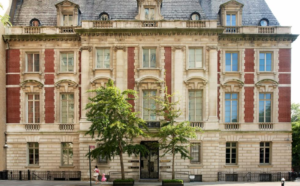 If you walked into a thrift store, and saw a painting that intrigued you, how do you judge it? First answer: you learn history of art, techniques of artists, and train your eye to judge what the world thinks of as aesthetic quality.
If you walked into a thrift store, and saw a painting that intrigued you, how do you judge it? First answer: you learn history of art, techniques of artists, and train your eye to judge what the world thinks of as aesthetic quality.
Second answer: you trust yourself. One of the most famous collectors in the world owns the iconic masterpiece “Portrait of Adele Bloch-Bauer I” (1907). The collector purchased that work after a long Nazi art restitution court case. He trusts his collecting gut, and will open his private collection to the public in New York City this month.
Lauder’s Exhibit
A collector’s personal philosophy of how they buy is almost as meaningful as what they buy. Ronald Lauder, 78, son of the late Estee Lauder, has the cash to buy what his instincts tell him to buy. Admittedly the Forbes Billionaire List puts him at number sixty-five in the world. Art Net News published his simple collecting formula, and I want to pass it along. It’s called the “Oh My God Formula.” The works shown this month in Lauder’s museum, the Neue Galerie, represents 65 years of Lauder’s “OMG” work.
The Neue Galerie on the upper east side displayed Lauder’s collection of German Expressionist art for the past 20 years. This present new show “The Ronald S Lauder Collection,” exhibits 500 “OMG” works of art from all periods, genres, and media.
His OMG formula Explained
If Lauder sees a work for the first time and says “oh,” it’s not the work for him. If he sees a work and says or thinks “oh my,” then something’s not top rate about the work. But if he sees a work, sculpture, painting, collectible, suit of medieval armor, and he thinks “Oh My God,” then it’s worth collected.
Other collectors I’ve worked for use this formula. A work of art will elicit an immediate impact on the eye and the heart. In Lauder’s case, he goes against his advisors and appraisers, the art market in general, dealers, galleries, opinions of auction houses for decades. For 65 years he’s bought what makes him say out loud “oh my God.”
Some collectors don’t want art that emotionally assaults them. They gravitate to more soothing works. Lauder made his fame as a collector with German Expressionism which goes straight to the gut. About the art market’s labels of hot genres to collect, Lauder doesn’t listen. He says, “All art was contemporary at one time, informed by the social and political perspectives of the moment in which it was created.”
Lauder: a different type of connoisseur
If you travel from the Central Coast to NYC this new year, check out Lauder’s show at the Neue Galerie through February 13. The show displays Lauder’s amazing breadth as a collector, rare among connoisseurs. Usually a connoisseur focuses on one medium, one artist or a similar school of artists, one era, and a certain genre. Maybe even a certain size and geographical location, and price point.
The connoisseur learns everything about a narrow era and artistic circle. They become scholars of an historical period. In some cases scholars of the science behind the object. A glass collector of early blown glass might know the chemical compositions. I once appraised a collection of kid’s shooting marbles, collected over 40 years by an expert in the field. He knew about early glass factories, work conditions, inventors of glass techniques and molding machines, what colors in the glass were created by what chemicals, the supply, sales and distribution systems in the early 20th century, the buyers, the marketing of the marbles, and the children’s toy market in general 1900-1930.
Lauder’s collection contains Greek and Roman sculpture, 13-14th century Italian painting, memorabilia from the movie “Casablanca,” carved treasures of ivory, suits of armor, arms, and chain mail. Also a collection of gold and silver small trinkets pulled from case pieces “wonder cabinets” of the 16-18th century. Called the “Kunstkammer,” this huge cabinet with shelves and drawers holds all types of wonders: natural history, coins, fine art, rare books, porcelain. Lauder collected the treasures found inside such a case, and his show is as eclectic as the contents of a 17th century wonder-cabinet.